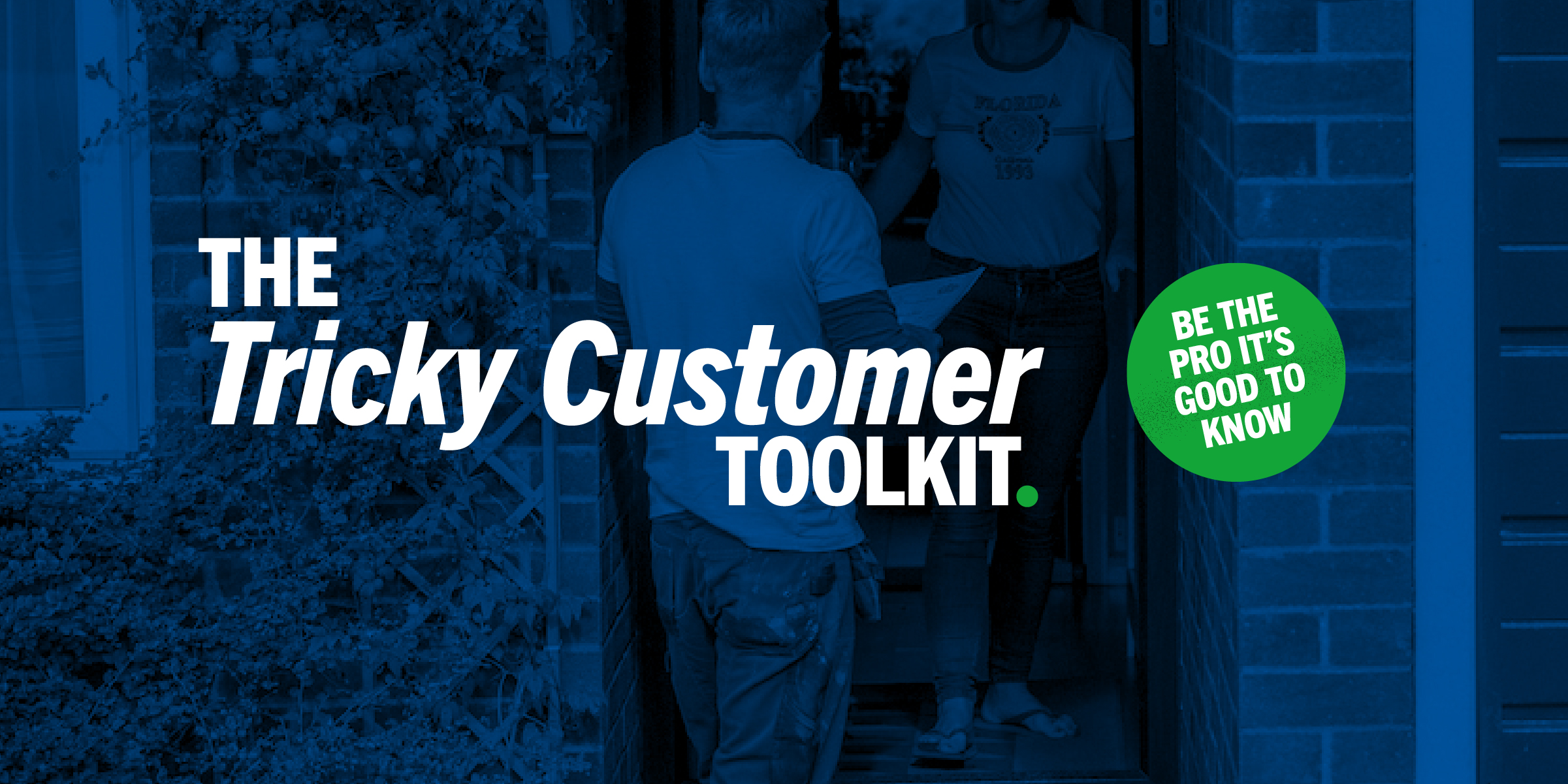


8 October 2019
You know how it goes. You start a job and everything looks great. Then your customer starts changing their mind, asking for more, querying costs… and generally proving a real headache to deal with. We’ve all been there – more times than we’d like. So what can we do to avoid it?
Today we’re looking at avoiding those tricky customer pitfalls before you topple into them – so you can swap nightmare jobs for smooth-running, stress-free ones. Let’s take a look.
In the trades, we work with all sorts of people, all the time. We’re in their kitchens, their bathrooms, their gardens, their lives. When it goes well, it’s a pleasure. When it gets awkward, well, it really does get awkward. The good news is, there’s plenty you can do to steer the ship.
We wrote recently about grading potential customers before you dive in and take on a job. That’s saved me from more nightmares than I can count over the years. But sometimes your gut just doesn’t tell you someone’s going to be difficult until it’s too late. And when that happens you need a toolkit to get you through (and not just the one in your van).
The way you handle people with the potential to be tricky can make a surprising difference to the way they behave, the way a project runs, and the reputation you walk away with. So it pays (literally!) to practise a few people-handling skills. They’ll help to keep everyone – including you – a whole lot happier.
It’s always worth investing a bit of time in getting organised up front. It shows you’re a pro and it sets things up well for the rest of the job. For starters, make sure your quotes are really clear and easy to understand, with no room for misunderstanding. You could even try listing out the work in the order you’ll do it – I find it helps customers get their heads around the whole job better.
Once your quote’s accepted, put together a robust, realistic, fully costed plan and schedule for the job. Get it in writing – and get it agreed by your customer before you start.
So you’re ready for whatever comes your way, have a set of clear terms and conditions that cover every eventuality you can think of. Give your customer a copy with your initial quote, and any updated quotes you send later. Again, getting them to sign it can’t hurt, and gives you something solid to fall back on if it all goes belly up.
This isn’t so much of an issue on small, quick jobs, but on longer-running projects it’s totally reasonable to put together a payment plan, get it agreed by your customer and ask them to pay you in instalments as the job goes on.
It gives you more security and gives them an easy way to spread the cost of the work (so there’s less chance you’ll get shortchanged). Even better, if you’ve got a team to pay or materials to buy, it’ll help keep your cashflow nice and healthy.
You’re crazy busy. We know the feeling. But keeping those lines of communication open really puts customers at ease. So take five minutes and make sure they know what’s going on – being clear, honest and friendly goes a surprisingly long way.
Most customers just want certainty. So show up when you say you’re going to, and do what you’ve said you’ll do. It’s not rocket science. It’s just what you’d want if you were in their shoes.
If timings need to change, just let them know. These things happen, and if you’re clear, friendly and keep managing their expectations, they’ll understand. If you’re not there and they don’t know why – or they can’t see the progress they expected – that’s when tension sets in.
A conversation tracker can be a big help with this. We’ve got one in YourTradebase, but do it however works best for you, even if that’s just keeping texts and emails so you can quickly look back and see what’s been agreed.
On longer jobs, try to arrange regular catch-ups with your customer. Once a week tends to work well for us, and ten minutes is probably all you need. It’s a good chance to make sure everyone knows what’s happening, what decisions need to be made and what needs choosing or buying.
You could also try sending weekly catch-up emails, especially if meeting in person isn’t practical. These can run through what you’ve been doing, what’s coming up next and what you need from them. We’ve got a handy email template you could try in YourTradebase, or you could come up with your own. Either way it’ll turn catch-ups into a quick two-minute job.
Jobs have a habit of evolving over time – morphing from one thing into another while you’re racing towards the end. So, when you talk things through in person or agree to make a change, confirm it by email or text so it forms part of your tracked conversation. Don’t risk any debate about what’s been agreed – document it.
Keeping job notes can help with this too. We all forget things sometimes, so when you’re talking to your customer it’s a good idea to make notes right there on the spot, then send them confirmation later. It honestly helps save a tonne of headaches.
When a task’s done, get your customer to approve it so you can move on. Then, if they change their mind, you can be really clear that they’re asking for new work, with new costs. Getting signed approval at the end of the whole job is a good idea too – it means you can get that invoice in, knowing they won’t come right back with queries.
Finally, if you’re not sure where your customer wants something – a pipe, a socket, a sink – don’t assume or make the choice for them, even if it seems like a total no-brainer to you. They might have a really clear idea of what they want, and it might not be what you were expecting.
So just ask. And, if you can, send a written message confirming the conversation. Yes it’ll take you a few minutes, but moving that sink will take you a whole lot longer.
Good luck out there. Here’s a quick roundup…
“Since I've started using YourTradebase it has made paperwork so easy and almost to the point addictive as I can monitor all my customers with no effort. The support is second to none and I would urge anyone to give it a go.” — Gary Cosway.
No fuss. No strings. No credit card needed.